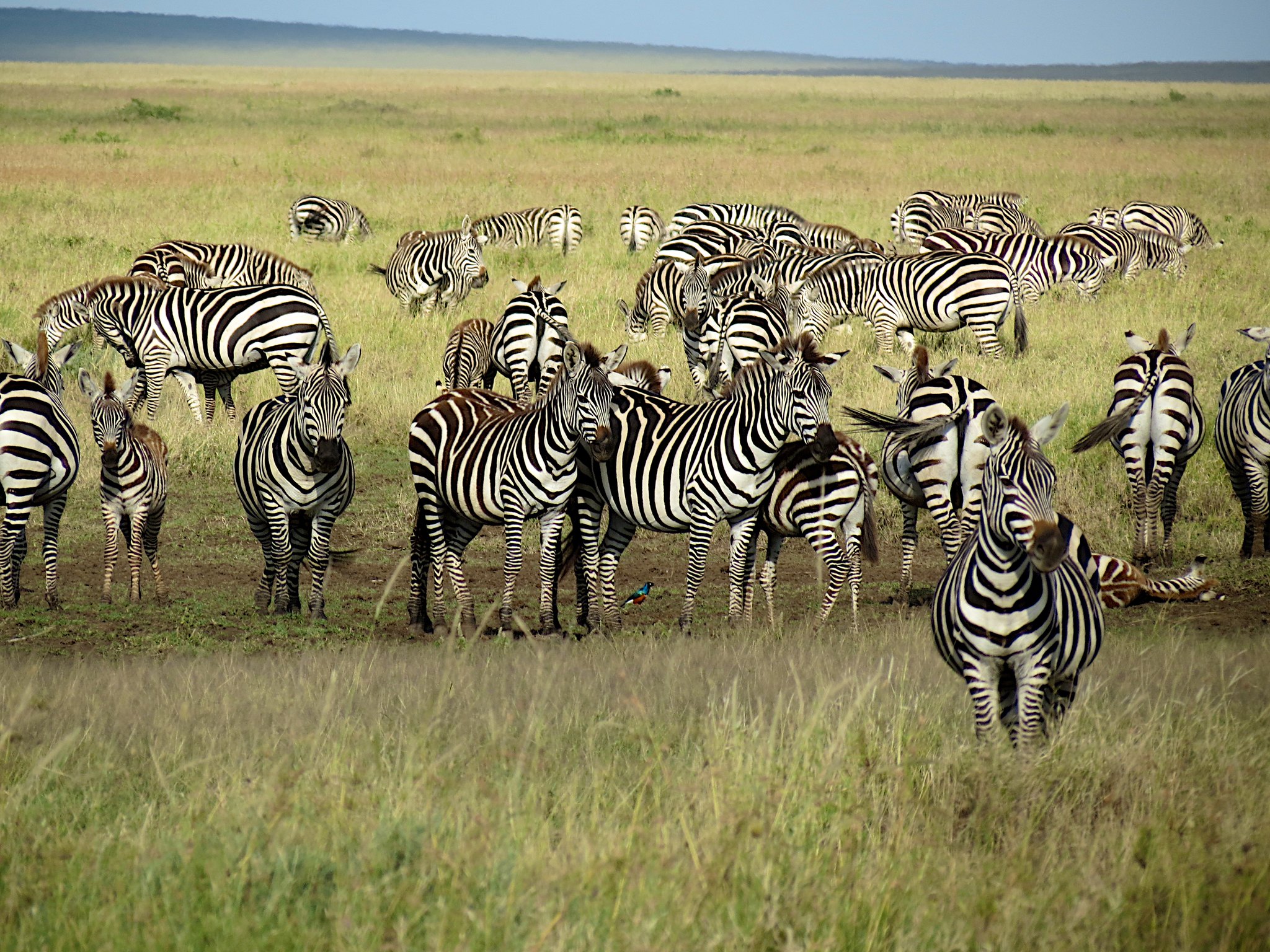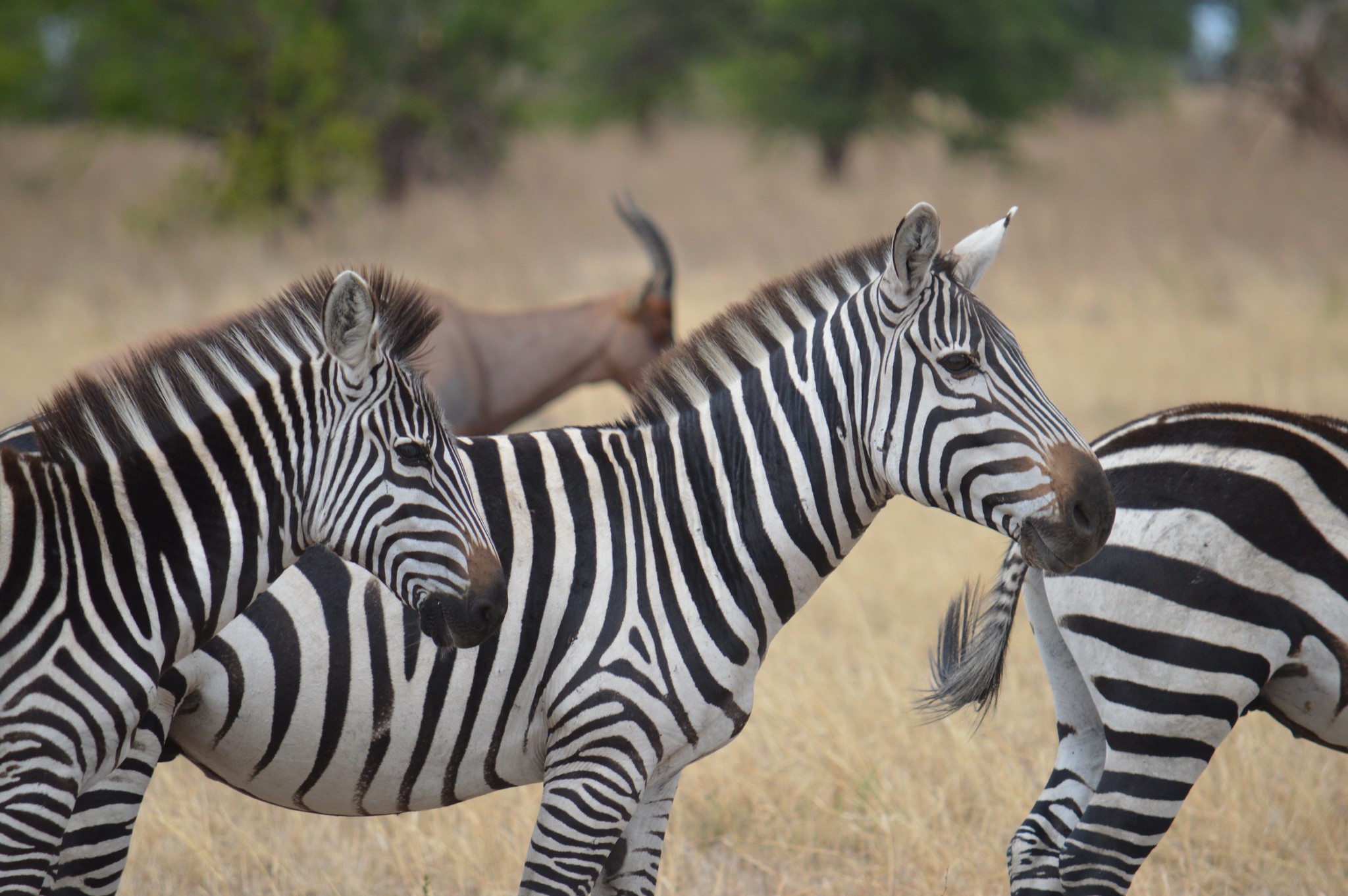12 Fun Facts About Zebras: Striped Wonders of the Savannah
Here are 12 Fun Facts About Zebras: Striped Wonders of the Savannah. The zebra is one of the most aesthetically striking animals found in Tanzania’s vast grasslands and savannas. These striped creatures have a special place in the animal realm in addition to being visually striking.

Let’s examine 12 fun facts about zebras.
1. The purpose of zebra stripes is defense.
There’s more to those striking black and white stripes than merely a style statement. In the animal realm, they play a vital role. According to some theories, zebras’ stripes make it difficult for predators to distinguish one individual from the group. They may also help regulate the zebra’s body temperature and act as a sort of insect repellent.
2. Three Species of Zebras Exist
Zebras belong to the horse family and are herbivorous mammals. Horses and asses are the only extant members of the family Equidae, and they all belong to the same genus, Equus. The Plains Zebra, Mountain Zebra, and Grevy’s Zebra are among the various zebra species found in Tanzania, each with unique characteristics and habitats.
3. Nature’s Barcodes Are Stripes
Each zebra has a unique stripe pattern, much like human fingerprints. By examining their unique patterns, researchers are able to identify individual zebras, which is a crucial tool for conservation efforts. According to scientists, zebras’ stripes might have a social function by aiding in mutual recognition.
4. Zebras have white stripes on their black bodies.
Contrary to popular belief, zebras are actually white with black stripes. The majority of zebras have black and white coats and dark skin. Black appears to be the natural color of fur since it develops from follicles that house the melanocyte cells that produce pigment. There is no coloration in the white fur.
5. They Use Vocalization to Communicate
Zebras can communicate with one another through a remarkable range of body language and vocalizations. Ear position, braying, and whinnying are all examples of social cues that communicate danger and dominance.
6. Zebras Don’t Have Picky Tastes
As herbivores, zebras mostly consume grasses and other plants for food. Their ability to break down fibrous plant through their digestive systems allows them to flourish in Tanzania’s grasslands. They are vital parts of the food chain because of their capacity to graze, which helps regulate vegetation growth and preserve ecosystem equilibrium.
7. Like wildebeest, they migrate
Zebras migrate in large numbers throughout Tanzania, much like the well-known wildebeest migration. They seek fresh grass and water by following the seasonal rains. Because they are so flexible, zebras can live in a wide range of environments, such as open plains, savannas, grasslands, and woods.
8. Zebras Avoid Danger by Using Their Speed
Predators such as lions, hyenas, and leopards pose a threat to zebras. They avoid possible assailants by using their speed and agility. They have extraordinary stamina that enables them to sprint for prolonged periods of time, and they can reach speeds of up to 40 miles per hour. When pursuing predators, they can also deliver powerful kicks to fend them off.
9. A Group Is Stunning
Zebras are gregarious creatures that frequently live in herds. Dazzle or enthusiasm, on the other hand, are other terms for zebra groupings. First used in the early 1900s, the term “dazzle of zebras” describes the visual impression of witnessing a sizable group of zebras running. Dazzle refers to temporarily blinding or confusing someone with light.
10. Their Vision Is Excellent
Zebras have superior vision compared to their migratory wildebeest. They have a broad field of vision since they have eyes on either side of its skull. Both during the day and at night, they have excellent vision. Zebras can see in full color, even though they are monochromatic themselves.
11. Zebras and Horses Descended from the Same Ancestor
Eohippus, also called the dawn horse, is thought to have been a common ancestor of horses, donkeys, and zebras. The extinct Eohippus, the original horse, lived between 55 and 58 million years ago. It had three toes on the back foot and four toes on each of the front feet, and it was only one to two feet tall at the shoulders.
12. African Folklore Features Zebras
Zebras are culturally significant in Tanzania and among African traditional groups. They appear in traditional rites, myths, and legends. In one well-known tale, a baboon protecting a waterhole engaged the once-white zebra in combat and prevailed. The zebra got its black stripes when it fell into the baboon’s campfire.
Quick Facts About Zebras
- Equus quagga, sometimes known as E. burchellii, E. zebra, or E. grevyi, is its scientific name.
- Typical Names: Mountain Zebra, Grevy’s Zebra, or Plains or Burchell’s Zebra
- Dimensions: 3.6–4.8 feet for the plains; 3.8–4.8 feet for the mountains; and 4.1–5.2 feet for Grevy’s
- Weight: Grevy’s zebra, 770–990 pounds; mountain zebra, 450–950 pounds; plains, 400–850 pounds
- Duration of life: 10–11 years
- Herbivorous diet
- Population: Mountain: 35,000; Grevy’s: 2,680; Plains: 150,000–250,000
- Habitat: Previously common across Africa, now found in distinct groups
Conservation Status: Mountain Zebra Vulnerable, Plains Zebra Near Threatened, and Grevy’s Zebra Endangered
Visit Tanzania to Witness Zebras. Zebras are nearly a given when on a Tanzanian safari, whether in Tarangire National Park, Ngorongoro Crater, or Serengeti National Park.

















